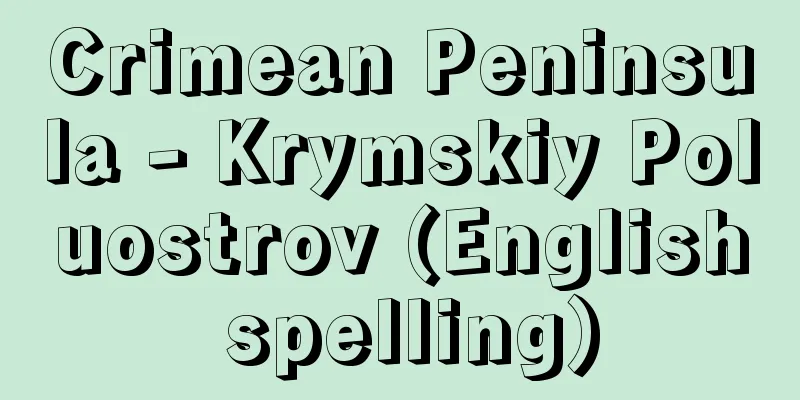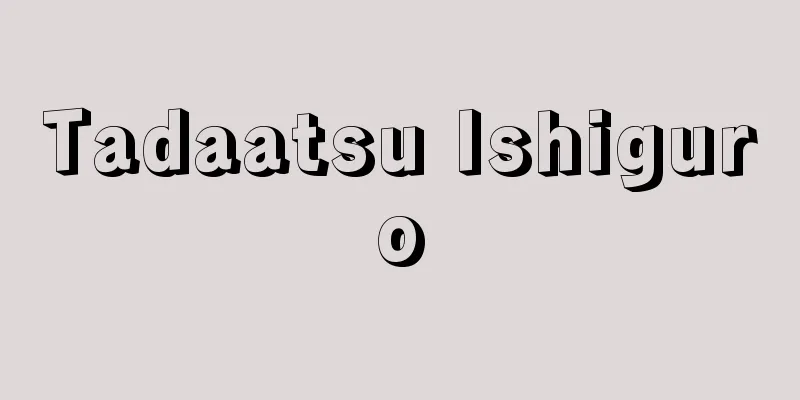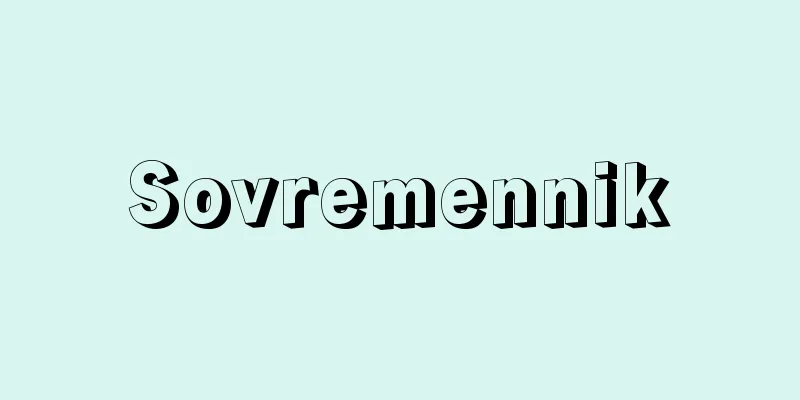Crimean Peninsula - Krymskiy Poluostrov (English spelling)

|
A peninsula on the Black Sea at the southern tip of Ukraine. Its Russian name is Crimea, and its English name is Crimea. Its area is 25,500 square kilometers. The peninsula is connected to the mainland by the Perekop Isthmus in the north. Railways, roads, and irrigation canals pass through the narrow isthmus, about 8 kilometers wide, which is the only land route. The Kerch Peninsula extends eastward to the east of the peninsula, separating the Sea of Azov from the Black Sea. A sandbar extends north from the base of the Kerch Peninsula, forming the Sivash Lagoon between the peninsula and the Crimean Peninsula. The northern part of the peninsula is a low-lying, dry steppe (short grass grassland). The river is short and dries up in summer. The southern end of the peninsula is lined with the cueta-like Crimean Mountains, which transition from steppe to forest. The highest peak of the mountain range is Mount Roman Kosh (1,545 meters), and the area around the peak is a peneplain-like plain with many pastures. There is little flat land on the southern foothills, as the mountain ranges drop steeply into the Black Sea. However, the climate is warm and Mediterranean, and tourist and resort cities such as Yalta, Miskhor, and Alupka line the coast. The peninsula's main industries are agriculture and the ironworks. Tobacco, cotton, and fruit are grown in the steppe areas, while grapes, tobacco, and oranges are grown in the foothills and are exported. Other industries include steelmaking, centered around Kerch, machinery manufacturing, brewing (mainly wine), canning, and salt production. The peninsula and its surrounding areas make up the Autonomous Republic of Crimea in Ukraine. The Autonomous Republic of Crimea has an area of 25,881 square kilometers and a population of 2,033,700 (2001). Its capital is Simferopol, located at the northern foot of the Crimean Mountains. Railways, air routes, and roads converge here, making it the transportation hub of the peninsula. [Mamoru Murata] historyThe name Crimea dates back to the Mongol period, but in ancient times it was called Taurica, a name given by the Greeks. Around the 8th to 7th centuries BC, the Scythians migrated to the area, driving out the native Cimmerians (Kimmers). Around the same time, the Greeks began to advance along the coast of the peninsula, and around the 5th century BC they established the Bosphorus Kingdom, centered on the Kerch Peninsula, and the city-state of Chersonesus in the western part of the peninsula. Around the 2nd century BC, the Kingdom of Pontus on the southern coast of the Black Sea intervened in the conflict between the Scythians and the Bosphorus Kingdom, and brought the Bosphorus Kingdom under its control. Furthermore, at the end of the 1st century BC, the Roman Empire took control of key coastal locations. From the 3rd to the 11th centuries AD, nomadic tribes such as Goths, Huns, Khazars, Pechenegs, and Komans (Polovts) invaded Crimea one after another. In the first half of the 13th century, the Mongols invaded and conquered Crimea, and it was included in the territory of the Golden Horde Khanate. In the first half of the 15th century, the Kipchak Khanate broke up, and the Crimean Khanate gained independence (around 1426), but in the second half of the century it became a protectorate of the Ottoman Turkish Empire. In the 16th and 17th centuries, the Crimean Khanate threatened Russia with the backing of Turkey, but in the 18th century the situation reversed, and after the First Russo-Turkish War (1768-74), it left Turkey's suzerainty and became Russian territory (1783). In the 19th century, it was the site of the Crimean War (1853-56), centered around the naval port of Sevastopol. In the 20th century, the Russian Revolution made it an autonomous republic within the Soviet Union (1921-45), but after a temporary occupation by German troops during World War II, it became the Crimea Oblast of Ukraine, and when the Soviet Union collapsed in 1991, it became the Autonomous Republic of Crimea. In February 1945, the resort town of Yalta hosted a summit meeting between the United Kingdom, the United States, and the Soviet Union (the Yalta Conference) to discuss the Allied war policies during World War II and issues surrounding post-war settlement. [Yukio Ito] Source: Shogakukan Encyclopedia Nipponica About Encyclopedia Nipponica Information | Legend |
|
ウクライナ南端部、黒海に臨む半島。ロシア語名クリム半島、クリミアCrimeaは英語名。面積2万5500平方キロメートル。半島と本土とは北のペレコプ地峡により結ばれる。鉄道、道路、灌漑(かんがい)水路などが幅約8キロメートルの狭い地峡に通じ、唯一の陸路となっている。半島の東部にはケルチ半島が東に向けて延び、アゾフ海と黒海とを分けている。ケルチ半島の付け根からは砂州が北に延び、クリミア半島との間にシバシュ潟を形成する。半島北部は低平な乾燥したステップ(短草草原)地帯が広がる。川は短く夏季には涸(か)れ川となる。半島の南端は、ケスタ状のクリミア山脈が連なり、ステップ地帯から森林地帯へと移行する。山脈の最高峰はロマン・コシ山(1545メートル)で、頂上の周辺は準平原状の平地となり、牧場が多い。南麓(なんろく)は山脈が急崖(きゅうがい)となって黒海に落ち込むため平地が少ない。しかし、気候は地中海性で温暖なため、海岸に沿ってヤルタ、ミスホル、アルプカなどの観光・保養都市が連なる。半島のおもな産業は農業、鉄工業などである。ステップ地帯ではタバコ、綿花、果樹など、山麓面ではブドウ、タバコ、オレンジなどが栽培され輸出されている。このほかケルチを中心とした製鋼業や機械工業、ワインを主とした醸造や缶詰、製塩などの産業がある。 半島とその周辺地域でウクライナのクリミア自治共和国を構成する。クリミア自治共和国は面積2万5881平方キロメートル、人口203万3700(2001)。首都はクリミア山脈の北麓に位置するシンフェロポリで、鉄道、航空路、道路が集中し、半島における交通の要(かなめ)となっている。 [村田 護] 歴史クリミアの名称はモンゴル支配時代に始まるが、古くはギリシア人がつけたタウリカTauricaの名でよばれた。紀元前8~前7世紀ごろ、先住民キンメリア(キンメル)人を駆逐してスキタイ人が移ってきた。同じころギリシア人が半島の沿岸に進出し始め、前5世紀ごろケルチ半島を中心にボスポラス王国を建設し、また半島西部に都市国家ケルソネスを建てた。前2世紀ごろスキタイ人とボスポラス王国との抗争に黒海南岸のポントス王国が介入し、ボスポラス王国をその支配下に入れた。さらに前1世紀末にはローマ帝国が沿岸要地を支配した。紀元後3世紀から11世紀にかけてゴート、フン、ハザール、ペチェネグ、コマン(ポーロベツ)などの遊牧民が相次いで侵入した。13世紀前半に侵入、征服したモンゴル人によって、クリミアはキプチャク・ハン国の版図に入れられた。15世紀前半、キプチャク・ハン国の分裂によって、ここにクリム・ハン国が独立する(1426ころ)が、世紀後半にはオスマン・トルコ帝国の保護国となった。16、17世紀、トルコの後押しでクリム・ハン国はロシアを脅かしたが、18世紀には形勢逆転し、第一次ロシア・トルコ戦争(1768~74)を経てトルコの宗主権を離れ、ロシア領となった(1783)。19世紀には軍港セバストポリを中心としてクリミア戦争(1853~56)の舞台となった。20世紀に至り、ロシア革命によってソビエト連邦内の自治共和国となる(1921~45)が、第二次世界大戦中ドイツ軍の一時占領を経て、ウクライナのクリム州となり、1991年のソ連解体で、クリミア自治共和国となった。保養地ヤルタでは、1945年2月、第二次世界大戦における連合国側の戦争政策と戦後処理の問題を討議する、イギリス、アメリカ、ソ連の首脳会談(ヤルタ会談)が行われた。 [伊藤幸男] 出典 小学館 日本大百科全書(ニッポニカ)日本大百科全書(ニッポニカ)について 情報 | 凡例 |
<<: Chestnut moth - Cydia kurokoi
Recommend
Tenant - Shakuchinou (English spelling)
Agricultural managers or farmers who occupy farmla...
Kokutaiji Temple
[1] A Rinzai sect Nanzenji temple in Akkeshi Town,...
Sangaku - mathematical picture
This refers to votive plaques dedicated to shrine...
Alfonso VII - Alfonso
…The name of the dynasty comes from the cousins ...
Imbe no Kobi - Imbe no Kobito
Year of death: 3rd year of Yoro, 7th leap year, 15...
Renouvier, Charles Bernard
Born: January 1, 1815, Montpellier [Died] Septembe...
Aichukamibun - Aichukamibun
...He was in the shortest distance to be promoted...
Chamarajendra (English spelling)
…As soon as the British defeated Tipu Sultan in t...
amdo
… [Classification and phylogeny] It has a long hi...
Summer fatigue - Natsubate
〘 noun 〙 To be completely exhausted by the summer ...
Please refrain from meeting me
…In addition, when a samurai's close relative...
Turpin, R.
In the 18th century, thefts such as burglary, the...
Moving iron type gauge - moving iron type gauge
...As an ammeter, it is desirable for the interna...
Mexican sunflower
...There are about 10 species of tall annual plan...
Communication policy - komyunikeshonseisaku (English spelling) communication policy
Generally speaking, it is a relatively new concept...

![Nago [city] - Nago](/upload/images/67cc658a2b577.webp)







